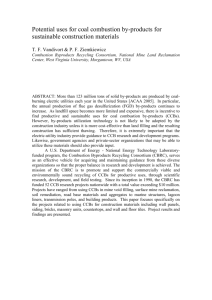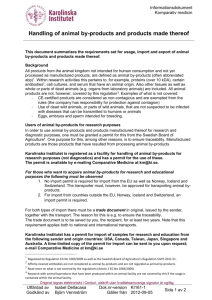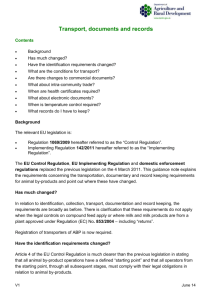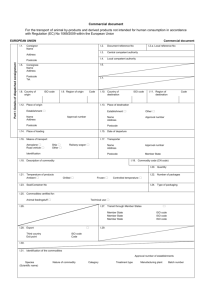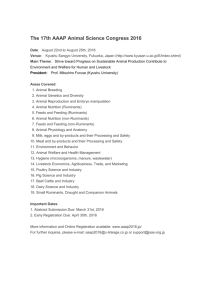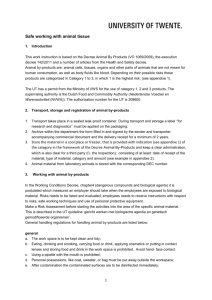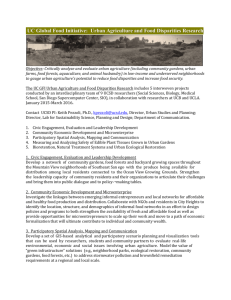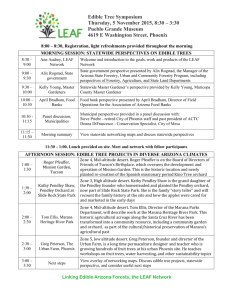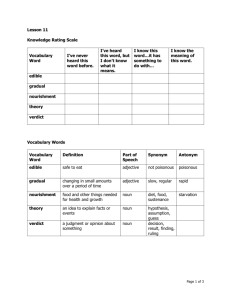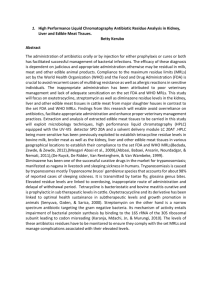Definitions - Quality Meat Scotland
advertisement
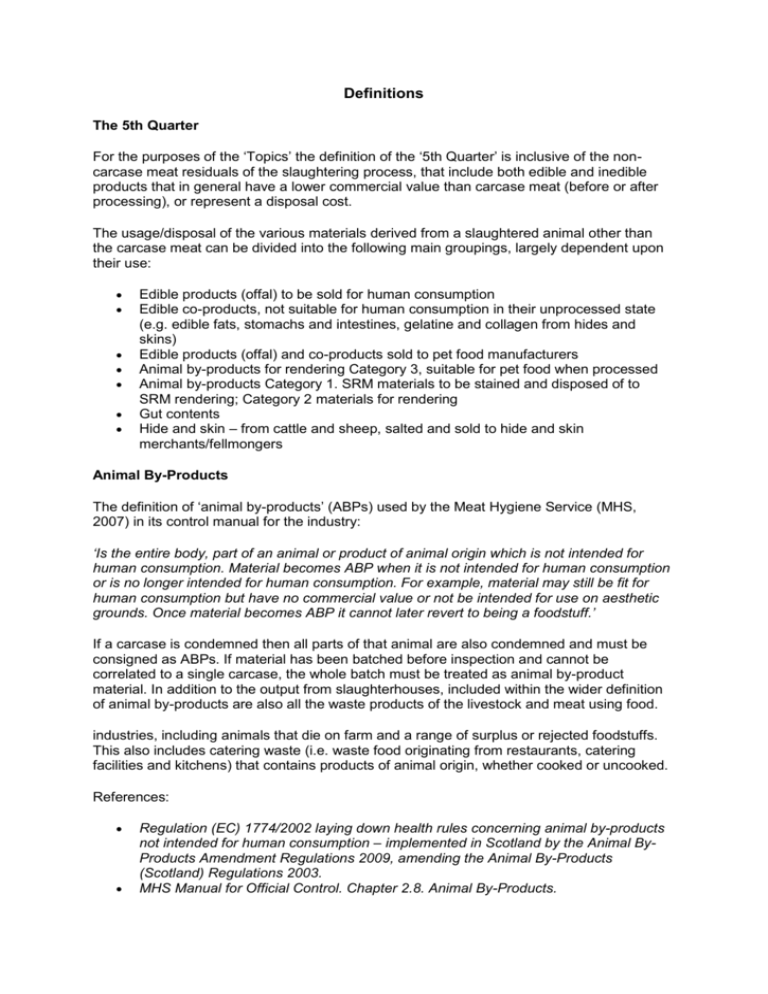
Definitions The 5th Quarter For the purposes of the ‘Topics’ the definition of the ‘5th Quarter’ is inclusive of the noncarcase meat residuals of the slaughtering process, that include both edible and inedible products that in general have a lower commercial value than carcase meat (before or after processing), or represent a disposal cost. The usage/disposal of the various materials derived from a slaughtered animal other than the carcase meat can be divided into the following main groupings, largely dependent upon their use: Edible products (offal) to be sold for human consumption Edible co-products, not suitable for human consumption in their unprocessed state (e.g. edible fats, stomachs and intestines, gelatine and collagen from hides and skins) Edible products (offal) and co-products sold to pet food manufacturers Animal by-products for rendering Category 3, suitable for pet food when processed Animal by-products Category 1. SRM materials to be stained and disposed of to SRM rendering; Category 2 materials for rendering Gut contents Hide and skin – from cattle and sheep, salted and sold to hide and skin merchants/fellmongers Animal By-Products The definition of ‘animal by-products’ (ABPs) used by the Meat Hygiene Service (MHS, 2007) in its control manual for the industry: ‘Is the entire body, part of an animal or product of animal origin which is not intended for human consumption. Material becomes ABP when it is not intended for human consumption or is no longer intended for human consumption. For example, material may still be fit for human consumption but have no commercial value or not be intended for use on aesthetic grounds. Once material becomes ABP it cannot later revert to being a foodstuff.’ If a carcase is condemned then all parts of that animal are also condemned and must be consigned as ABPs. If material has been batched before inspection and cannot be correlated to a single carcase, the whole batch must be treated as animal by-product material. In addition to the output from slaughterhouses, included within the wider definition of animal by-products are also all the waste products of the livestock and meat using food. industries, including animals that die on farm and a range of surplus or rejected foodstuffs. This also includes catering waste (i.e. waste food originating from restaurants, catering facilities and kitchens) that contains products of animal origin, whether cooked or uncooked. References: Regulation (EC) 1774/2002 laying down health rules concerning animal by-products not intended for human consumption – implemented in Scotland by the Animal ByProducts Amendment Regulations 2009, amending the Animal By-Products (Scotland) Regulations 2003. MHS Manual for Official Control. Chapter 2.8. Animal By-Products. Specified Risk Material During the 1980s the traditional 5th Quarter industry was competing with a number of vegetable-based and manmade alternatives. The Bovine Spongiform Encephalopathy (BSE) crisis accelerated this and a number of traditional outlets were closed e.g. blood for fire extinguishers, tallow for soaps and cosmetics, etc. With the decline in the number of BSE cases and the changing legislation, aspects of the traditional 5th Quarter industry are set to make a comeback operating within the current Animal By-Product Regulations (ABPR) and the Transmissible Spongiform Encephalopathy (TSE) legislation. The BSE outbreak created a new group of Specified Risk Materials (SRMs) that have to be removed from the carcase and disposed of in accordance with the legislation. In addition concern about public and animal health led to the creation of Category 1, 2 and 3 by-products requiring separation and specific processing either at the slaughterhouse or in a specialist plant. Cattle – applies to all EU states All ages: tonsils intestines from the duodenum to the rectum mesentery Over 12 months: skull excluding the mandible and including the brain and eyes, and spinal cord Over 30 months: Vertebral column including the dorsal root ganglia, but excluding: o vertebrae of the tail o spinous and transverse process of the cervical, thoracic and lumbar vertebrae o median sacral crest and wings of the sacrum Sheep and Goats – applies to all EU states All ages: the spleen and the ileum (Note: To ensure that all of the ileum is removed, approximately 60 cm of the terminal small intestine should be removed and disposed of as SRM starting from the ileocaecal junction, upwards and away from the caecum. If the Operator does not separate and remove the ileum correctly all the attached intestines should be disposed of as SRM.) Over 12 months (or permanent incisor erupted): skull, including the brain and eyes, tonsils, spinal cord. (Note: Skull does not include horns.) The list of SRM items is continually updated and reviewed as scientists assess the risk of infection posed by these items. Reference: TSE (Transmissible Spongiform Encephalopathy Regulations (TSER). Edible Co-Products The term Edible Co Products (ECoPs) is used to describe products, that although technically fit for human consumption (they have come from animals that have satisfactorily passed ante- and post-mortem inspection) are not suitable for human consumption in their unprocessed state. Food business operators (FBOs) must be able to demonstrate that the ECoP they produce meet all the relevant requirements of the legislation and are covered by valid HACCP plans. ECoPs, intended for human consumption, leaving the slaughterhouse or the processing plant must be clearly marked on the container or packaging with an oval identification mark bearing the information laid down in Section I, Annex II of Regulation (EC) 853/2004. References: EU Food Hygiene Regulations (Food and Edible Co-Products). http://www.food.gov.uk/foodindustry/regulation/europeleg/eufoodhygieneleg/ Regulation (EC) 853/2004 laying down specific hygiene rules for food of animal origin. Annex III. FSA Industry Guide on Edible Co-Products and Animal By-Products – see Short Introduction to the Industry Guide on Edible Co-Products.
